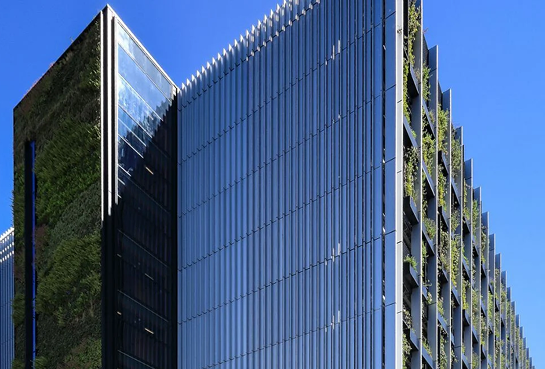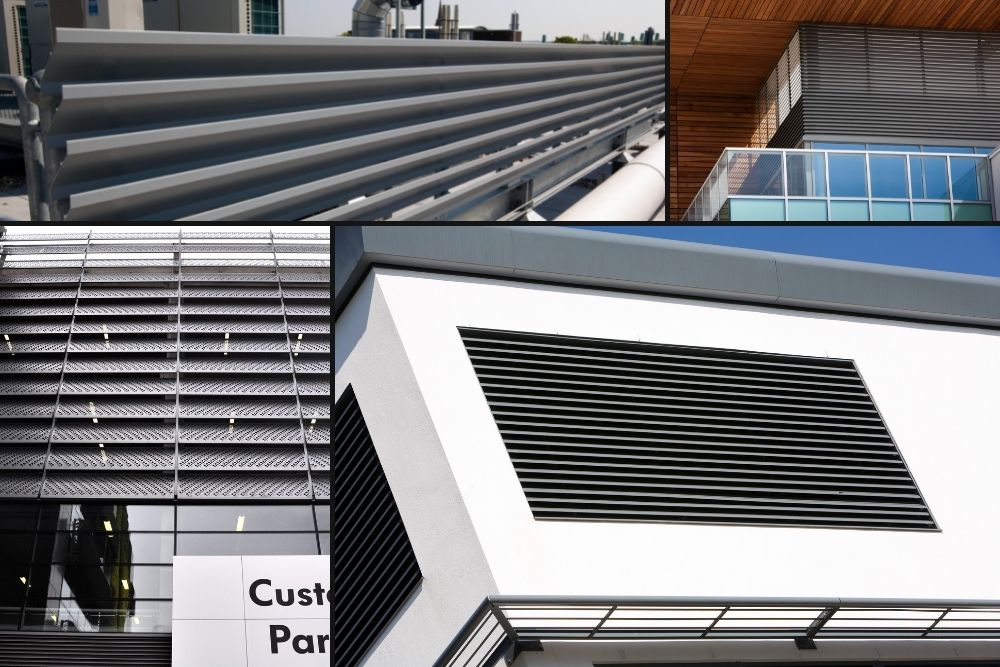
Latest
News
What are Louvres? – Maple Sunscreening

- About Maple (100)
- Car Parks (90)
- Office and Retail (47)
- Government (39)
- Rainscreen (36)
- Louvres (30)
- Education (24)
- Residential (24)
- Brise Soleil (22)
- Health (20)
- HSEQ (18)
- Commercial Blinds (16)
- Sustainability (15)
- Data centres (10)
- Pre-Construction services (10)
- Architectural facade (7)
- North West (2)
Maple have been designing, manufacturing, and installing louvres for more than 30 years.
During that time, we’ve seen them evolve from basic screening products to advanced systems offering best-in-class performance and compelling commercial benefits.
But what exactly are louvres for, and what should you be thinking of when specifying louvre products?
In a nutshell
Louvres are ventilation products that allow air into a building or structure, but keep rain and dirt out.
Why are louvres important?
Airflow is essential in all sorts of buildings to provide clean air for people and machinery. Protecting sensitive areas from the elements is just as important.
But louvres can also protect neighbours from noise and light spill – say, from multi-storey car parks. And, of course, as louvres form an integral part of the building envelope, it’s important they look good too.
It’s no surprise then, that there are as many different types of louvre as there are different airflow and protection requirements.
Key considerations
Louvres are designed for two apparently contradictory functions: to allow air into a building or structure and to keep wind-driven rain (and dirt, pollution and pests) out. The blades provide protection, while the openings allow airflow.
For a building such as a car park, where exhaust fumes are potentially dangerous, ventilation will be more important. For a plant room containing electrical equipment, the emphasis may be on protection.
Either way, the final design of any weather louvre system will be the result of a careful analysis of environment, priorities and data by specialists such as Maple.
SCREENING LOUVRES
Maple’s screening louvres are typically used on rooftop locations to hide unsightly HVAC machinery and equipment. They allow airflow with some weather protection.
VENTILATION LOUVRES
Maple’s ventilation louvres are designed to provide maximum airflow – say in a car park, where dispersing exhaust fumes is more important than preventing water ingress.
HIGH-PERFORMANCE WEATHER LOUVRES
Maple have developed a best-in-class weather louvre system that uses an innovative aerodynamic blade profile to maximise airflow AND prevent water ingress. The unique clip-on design means it can be easily changed from a single-bank to a double-bank system.
ACOUSTIC LOUVRES
Maple’s acoustic louvres reduce noise pollution from plant rooms and car parks, while still allowing air intake and exhaust outflow.
AESTHETIC LOUVRES
Although performance is usually the primary consideration, Maple’s louvres can be manufactured in a range of materials, designs and colours. Blades are typically aluminium but can be powder-coated or anodised.
Take a closer look
Maple used a modular system of pre-fabricated panels to supply a rooftop plant screen at the Menai Science Park (M-Sparc) on Anglesey. The louvred screens protect critical machinery from dirt, pollution and weather.
Different types of blade and blade configuration were used on an office, retail and leisure building in London’s King’s Cross. As well as protecting machinery, the louvres were powder-coated to match the architect’s specifications.
We designed and installed custom louvres for Cambridge Assessment’s new Triangle Building that protected people and machinery from the weather in open stairways and plant areas, and cut out noise.
To discover how Maple’s louvre products and years’ of experience can help your next project, get in touch.
